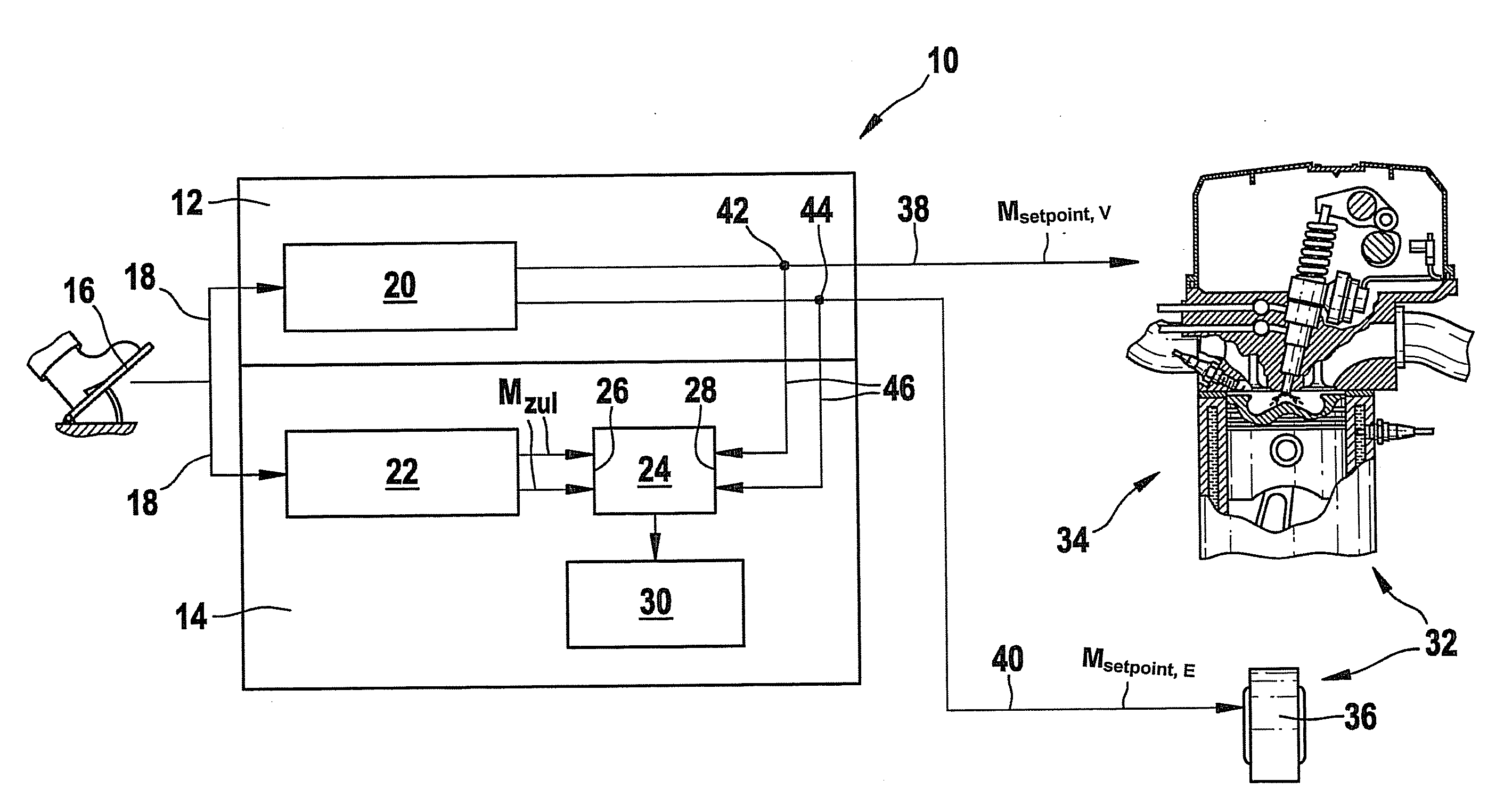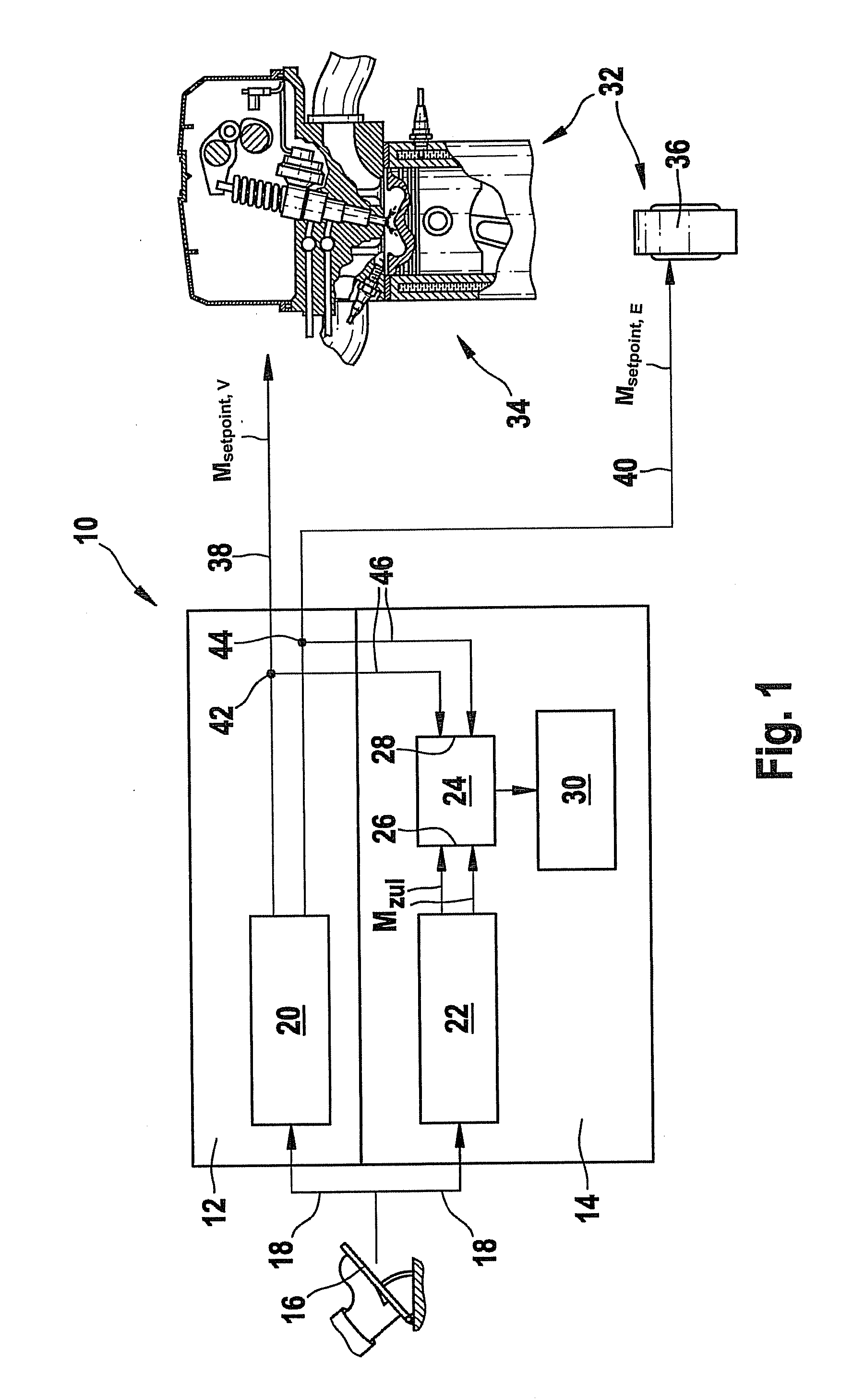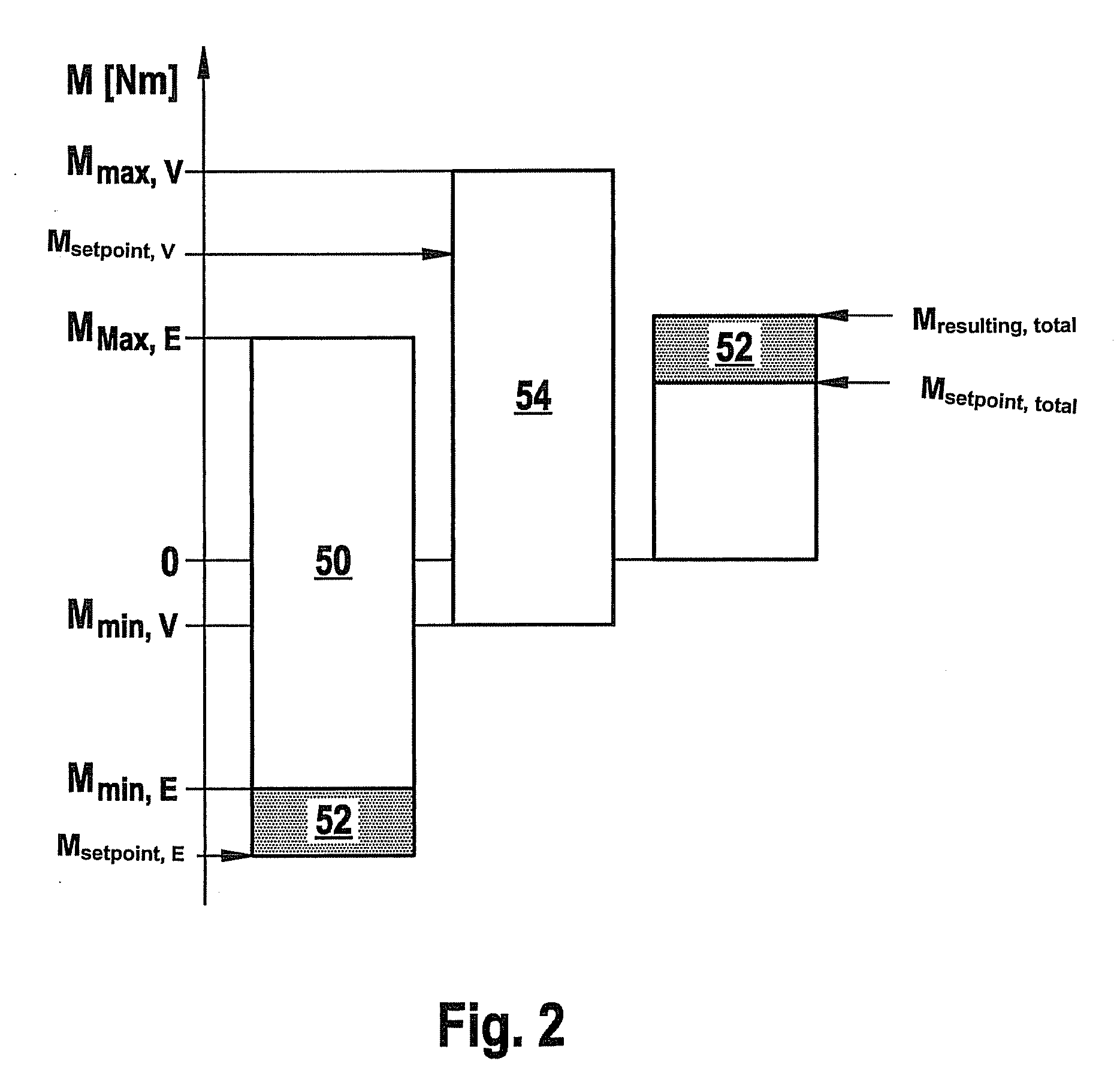Method for monitoring multi-motor drive
a multi-motor drive and monitoring method technology, applied in the direction of navigation instruments, braking components, gas pressure propulsion mounting, etc., can solve the problems of unreliable vehicle acceleration at excessively high activation, no torque monitoring provided, etc., to achieve significant reduction of hazard to individuals, whether vehicle occupants or other traffic participants, and high drive torque
- Summary
- Abstract
- Description
- Claims
- Application Information
AI Technical Summary
Benefits of technology
Problems solved by technology
Method used
Image
Examples
Embodiment Construction
[0013]FIG. 1 shows continuous torque monitoring within a vehicle control unit, continuous torque monitoring being performed in a comparison stage between a permissible torque Mzul and setpoint torques Msetpoint,V and Msetpoint,E.
[0014]A vehicle control unit 10 shown in FIG. 1 includes a functional level 12 (first level) and a monitoring level 14 (second level). Both levels 12, 14 are integrated into the vehicle control unit 10. Depending on the position of a gas pedal 16 determined by the driver, which is used as the driver input transmission device, a setpoint value 18 of a setpoint torque is impressed on a calculation stage 20 provided in functional level 12 and also on a calculation stage 22 in monitoring level 14. In functional level 12, calculation stage 20 calculates both a setpoint torque Msetpoint,V 38 and a value for a setpoint torque Msetpoint,E 40. Setpoint torques Msetpoint,V 38 and Msetpoint,E 40 are output to a hybrid drive 32, which includes at least one internal comb...
PUM
 Login to View More
Login to View More Abstract
Description
Claims
Application Information
 Login to View More
Login to View More - R&D
- Intellectual Property
- Life Sciences
- Materials
- Tech Scout
- Unparalleled Data Quality
- Higher Quality Content
- 60% Fewer Hallucinations
Browse by: Latest US Patents, China's latest patents, Technical Efficacy Thesaurus, Application Domain, Technology Topic, Popular Technical Reports.
© 2025 PatSnap. All rights reserved.Legal|Privacy policy|Modern Slavery Act Transparency Statement|Sitemap|About US| Contact US: help@patsnap.com



